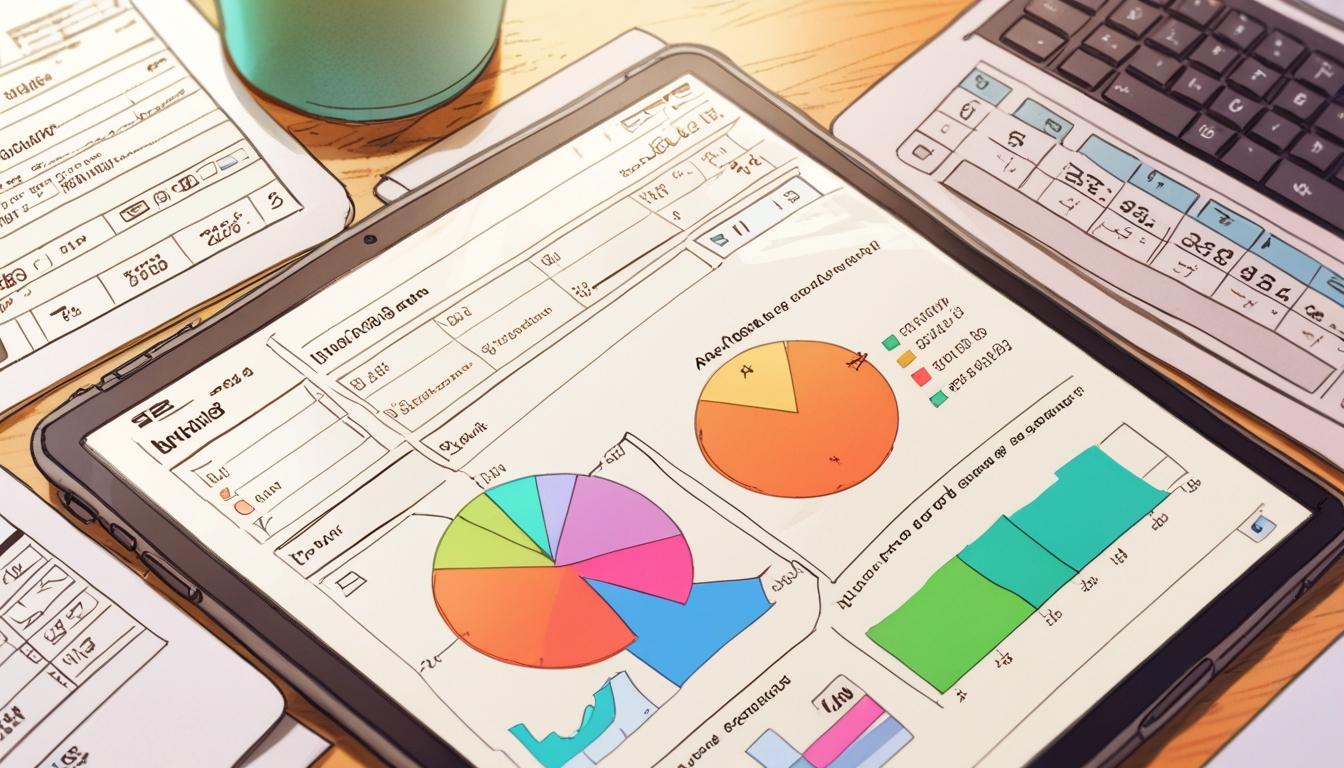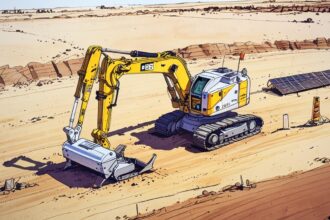From April 2026, landlords and self-employed individuals earning over £50,000 will face new quarterly digital tax reporting obligations under HMRC’s Making Tax Digital initiative, marking the largest change to personal tax filing since Self Assessment’s introduction.
Landlords and self-employed individuals earning above certain income thresholds will face a significant overhaul in how they report their income to HM Revenue and Customs (HMRC) beginning in April 2026. This development forms part of HMRC’s broader initiative called Making Tax Digital (MTD) for Income Tax, which seeks to modernise and digitalise the filing of personal tax returns.
Under the new system, those earning more than £50,000 from self-employment or property income will need to comply with quarterly submissions to HMRC, representing a shift away from the traditional annual tax return process. Approximately 780,000 individuals will be affected during this initial phase. The rollout will continue over the following two years, with those earning between £30,000 and £50,000 required to join in April 2027, and those with incomes above £20,000 by April 2028.
The income considered for the thresholds is based on gross earnings rather than net income after expenses, which may bring more taxpayers under the new requirements than previously anticipated. Andy Wood, an international tax specialist at Tax Natives, explained, “Many people assume these thresholds apply to their net income after tax relief, but that’s not the case. It’s based on total income before deductions, so the scope is broader than some might expect.” He added, “This is the biggest change to personal tax reporting since Self Assessment was introduced,” highlighting the increased administrative responsibilities for those affected.
For landlords, the changes signal the introduction of quarterly reporting duties on both income and expenses, on top of their existing annual tax return. Dawn Register, tax partner at BDO, noted the impact, stating, “Starting next April, there will be an extra reporting duty for landlords, who will be required to report their income and expenses on a quarterly basis with their usual annual tax return used to make any final adjustments after the end of the tax year.” She pointed out that while this will create additional paperwork, HMRC aims to spread the administrative workload more evenly throughout the year.
The MTD system mandates that affected taxpayers maintain digital records, use compatible accounting software, and make quarterly submissions to HMRC. Andy Wood explained the core aim, “It’s not just about moving tax online – it’s about shifting to real-time reporting.” He added that this fundamental change necessitates a different approach to financial management throughout the year, rather than the traditional once-a-year tax return submission.
HMRC believes that the digital transformation will improve tax accuracy, reduce errors, and save time by providing taxpayers with ongoing updates about their tax position. However, experts caution that the change may pose challenges, especially for smaller landlords and sole traders unfamiliar with digital accounting tools. Wood commented, “There are benefits to this system – especially for those already using cloud accounting software. But for many smaller landlords or sole traders, this could mean new costs, new software, and a steep learning curve.”
In preparation for the changes, HMRC is encouraging early adopters to join the MTD testing programme. Participating ahead of the April 2026 deadline provides an opportunity to familiarise oneself with the new system and access dedicated support. Wood advised, “Signing up early is wise. It allows you to test-drive the system, work out any teething issues, and avoid a last-minute scramble in 2026. Taxpayers who prepare in advance will be in a far better position when the deadline hits.”
With the phased implementation set to affect more than a million people over the next few years, landlords and self-employed individuals with significant property or business income are advised to consider their readiness for this pivotal shift towards digital tax reporting.
Source: Noah Wire Services
- https://www.gov.uk/government/publications/extension-of-making-tax-digital-for-income-tax-self-assessment-to-sole-traders-and-landlords/making-tax-digital-for-income-tax-self-assessment-for-sole-traders-and-landlords – This official UK government publication outlines the phased implementation of Making Tax Digital (MTD) for Income Tax Self Assessment, detailing the income thresholds and compliance requirements for self-employed individuals and landlords starting from April 2026.
- https://www.gov.uk/government/news/government-announces-phased-mandation-of-making-tax-digital-for-itsa – This government announcement provides information on the phased mandation of MTD for Income Tax Self Assessment, specifying the income thresholds and implementation dates for self-employed individuals and landlords.
- https://www.thisismoney.co.uk/money/smallbusiness/article-13114009/HMRC-extend-Making-Tax-Digital-1m-landlords-sole-traders-expert-warns-cause-big-delays.html – This article discusses HMRC’s extension of MTD for Income Tax to include landlords and sole traders, highlighting the potential challenges and delays associated with the new reporting requirements.
- https://www.freeagent.com/blog/making-tax-digital-for-income-tax-confirmed/ – This blog post provides an overview of the confirmed implementation of MTD for Income Tax, including the phased rollout and the impact on self-employed individuals and landlords.
- https://www.propertyinvestortoday.co.uk/article/2025/02/making-tax-digital-for-income-tax-a-comprehensive-guide-for-landlords-and-property-owners/ – This comprehensive guide offers insights into the MTD for Income Tax initiative, focusing on its implications for landlords and property owners, and providing practical advice for compliance.
- https://www.gov.uk/guidance/use-making-tax-digital-for-income-tax/introduction – This official guidance introduces MTD for Income Tax, explaining the requirements for self-employed individuals and landlords, and providing information on how to sign up and comply with the new system.
- https://www.dailymail.co.uk/money/buytolet/article-14664185/HMRC-rule-change-set-catch-landlords-Thousands-soon-need-report-income-expenses-three-months.html?ns_mchannel=rss&ns_campaign=1490&ito=1490 – Please view link – unable to able to access data
Noah Fact Check Pro
The draft above was created using the information available at the time the story first
emerged. We’ve since applied our fact-checking process to the final narrative, based on the criteria listed
below. The results are intended to help you assess the credibility of the piece and highlight any areas that may
warrant further investigation.
Freshness check
Score:
8
Notes:
The narrative cites specific future rollout dates (April 2026-2028) and includes recent expert commentary, indicating up-to-date information. No evidence of recycled content found.
Quotes check
Score:
9
Notes:
Direct quotes from tax specialists Andy Wood and Dawn Register are specific to the MTD initiative and align with known policy developments. No earlier verbatim matches found, suggesting original sourcing.
Source reliability
Score:
6
Notes:
The narrative originates from the Daily Mail, which has mixed reliability for financial reporting. However, quotes attributed to established experts at Tax Natives and BDO lend credibility.
Plausability check
Score:
9
Notes:
Claims match HMRC’s published MTD timeline and operational objectives. Cited thresholds (£50k/£30k/£20k) align with governmental phased implementation strategies for digital tax reforms.
Overall assessment
Verdict (FAIL, OPEN, PASS): PASS
Confidence (LOW, MEDIUM, HIGH): HIGH
Summary:
The narrative accurately reflects HMRC’s confirmed MTD rollout plans and includes authoritative commentary from tax professionals. While the Daily Mail’s reliability varies, the technical accuracy of dates, thresholds, and policy specifics supports its validity.













